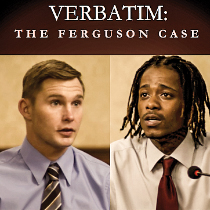 |
 |
||||||||||||||
| Discover Act Create Tufts Goes to Hollywood From Here to Hollywood So Many Notes, So Little Time Just Say No Bellying Up to the Bard Mixed Media Sound and Story ConnectDepartments |
 |
Creative Class
Sound and Story
Clifford J. Tasner, A85, wrote the film score for Verbatim: The Ferguson Case, which was nominated for best short film at this year’s Sundance Film Festival. Directed by Brett Weiner, A05, Verbatim dramatizes the transcript from the grand jury testimony of Darren Wilson, the policeman who killed Michael Brown in Ferguson, Missouri, and Dorian Johnson, Brown’s friend who witnessed his death. We talked with Tasner about the film-scoring process:
“My process starts by watching the film with the director. Film music is all about math. It’s about how many minutes, seconds, or frames there are before what we call “an obligation”—for example, a gunshot or someone starting to cry. We know that, say, at 5:33 and four frames, we want the music to start, at 6:43 and twelve frames, there’s an obligation, and we want the music to arrive on the beat where it will have the most emotional impact. A lot of directors don’t really know music, but they know how to talk about emotions, and once we get the math down, they give me adjectives to describe what people should be feeling at a particular moment.
I usually write more in the John Williams vein of telling a story using music, but film scoring is not about your vision—it’s about your ability to help the director translate his vision. For Verbatim, Brett wanted something ambient and objective, something that didn’t telegraph to people what they should be feeling when they watched it. I could easily have used music to make viewers feel like the cop was a villain or the other man was untrustworthy, but we went with something more atmospheric that could speak to the tragedy of what happened without telling you who to root for.
I love composing for a traditional orchestra. There’s enough in your toolbox with woodwinds and brass and strings to do just about anything you want to do, and it’s much more visceral and emotionally gratifying than using synthesizers. Strings are the foundation of the orchestra and give everything else its color. If I have a tight budget and can get some strings in there, I can really say something.”